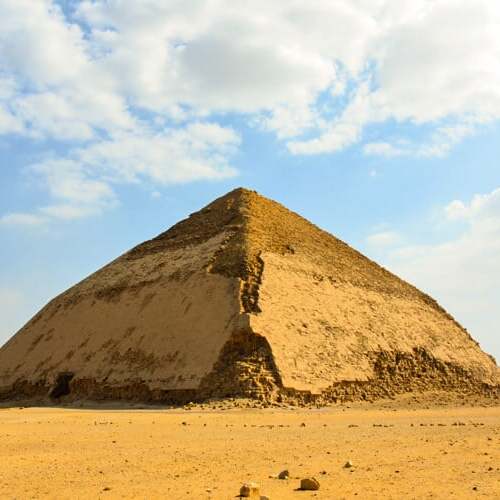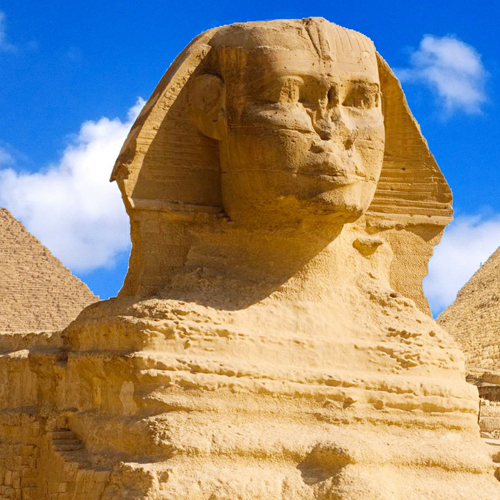No other nation in the world says ‘Welcome’ as often as the Egyptians, and every time, they mean it. While the ancient civilization of Egypt continues to amaze, contemporary Egyptians are equally remarkable.
Dahshur Necropolis
The Dahshur Necropolis
In 1894, the intrepid explorer Jacques de Morgan embarked on a year-long journey of excavation and discovery within the fabled Dahshur Necropolis, a place steeped in ancient Egyptian history and mystery. His quest led him to unearth the resting places of long-forgotten royalty, and his findings have left an indelible mark on our understanding of this enigmatic site.
De Morgan’s first momentous revelation came while he was meticulously excavating near the awe-inspiring Pyramid of Senwosret III. Here, hidden beneath the sands of time, he unveiled the entrance to tombs that cradled the remains of ancient royalty. Within these subterranean chambers lay the dignified ladies of royalty, their small pyramids rising proudly above the ground.
As de Morgan delved deeper into the heart of these tombs, he uncovered treasures of unparalleled beauty and significance. Among his most breathtaking discoveries was the dazzling jewelry that once adorned Princess Sithathor, the daughter of Pharaoh Senwosret II. A spectacular pectoral piece, crafted in the likeness of Senwosret II himself, now graces the halls of the Cairo Museum as a testament to the splendor of a bygone era. Another remarkable find was a scarab belonging to Senwosret III, a link to a time when these pharaohs ruled over the land of the Nile.
De Morgan’s exploration continued, revealing a trove of jewels attributed to Queen Meret, believed to be either the wife or daughter of Senwosret III. These exquisite jewels bore the names of Pharaohs Amenemhet III and Senwosret, including a dazzling array of rings, scarabs, and two magnificent pectorals, each a piece of history brought back to life.
In the following season, de Morgan turned his attention to the Pyramid of Amenemhet II, where once more, the secrets of ancient royalty awaited his discovery. This time, he unearthed the resting places of luminaries such as Queen Khnemet, Chancellor Amenhotep, and Princesses Itweret, Ita, and Sithathormerit. The mummies of these princesses were adorned with opulent jewelry, untouched by the ravages of time and grave robbers, preserving the splendor of their burials for generations to come. The Cairo Museum now houses a remarkable collection of artifacts from these tombs, a testament to de Morgan’s unwavering dedication to unraveling the mysteries of Dahshur.
During his third season in the Dahshur Necropolis, de Morgan uncovered a plethora of captivating burials near the Pyramid of Amenemhet III. On the northern flank of this imposing pyramid, he stumbled upon the tombs and shafts of twelve royal family members. Among these distinguished individuals was King Hor-Awibre of the 13th Dynasty, whose wooden ka statue has since become a celebrated relic. The statue, still housed in its original wooden shrine, stands tall at 1.75 meters, its intricate carvings immaculately preserved. The tomb site yielded an array of funerary treasures, including a canopic chest, pottery, alabaster objects, stelae, a table, and a rectangular wooden coffin adorned with inscriptions.
As de Morgan’s relentless search continued, he uncovered the resting place of Princess Nubhotepti-Kheref. Historians believe her father to be none other than King Hor-Awibre. Though time had not been kind to her burial chamber, which suffered from dampness and decay over the centuries, the princess’s tomb remained untouched. Within its hallowed confines lay a sarcophagus, within which rested a wooden coffin adorned with resplendent gold, cradling the princess’s remains. Remarkably, her mummy still bore the jewelry that had adorned her in life, a testament to the fact that grave robbers had never desecrated this sacred site. Near the burial chamber, de Morgan unearthed a treasure trove of funerary artifacts, believed to be over 4,500 years old, serving as a poignant link to Egypt’s distant past.
The Dahshur Necropolis, with its wealth of treasures and secrets, stands as a testament to Egypt’s enduring legacy, and thanks to the relentless efforts of explorers like Jacques de Morgan, its stories continue to captivate and inspire.
Created On March 18, 2020
Updated On Aug , 2024
Giza Travel Guide



